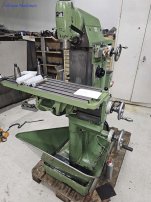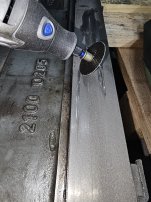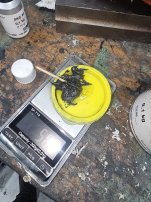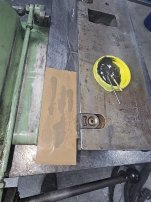Peter from Holland
Diamond
- Joined
- Jan 15, 2005
- Location
- The Netherlands
We got this Deckel FP1 in With even a chiptray
Most of the time these are gonne
To evaluate the machine we did some measurements
Play on the vert spindle bearings ±0.01mm
Runout vert spindle ±0.0005mm Yes half a thousands of a mm
X-axe backlash ±0.6mm on the nonius
Y-axe backlash ±0.14mm on the nonius
Z-axe backlash±0.28mm on the nonius
Bad thing is that it has some scratches on the X-ways
I just ordered some SKC 63R to repair those
Once fixed I put it up for sale
I think this came out pretty dammed good for a ±60 year old machine
Peter
Most of the time these are gonne
To evaluate the machine we did some measurements
Play on the vert spindle bearings ±0.01mm
Runout vert spindle ±0.0005mm Yes half a thousands of a mm
X-axe backlash ±0.6mm on the nonius
Y-axe backlash ±0.14mm on the nonius
Z-axe backlash±0.28mm on the nonius
Bad thing is that it has some scratches on the X-ways
I just ordered some SKC 63R to repair those
Once fixed I put it up for sale
I think this came out pretty dammed good for a ±60 year old machine
Peter










